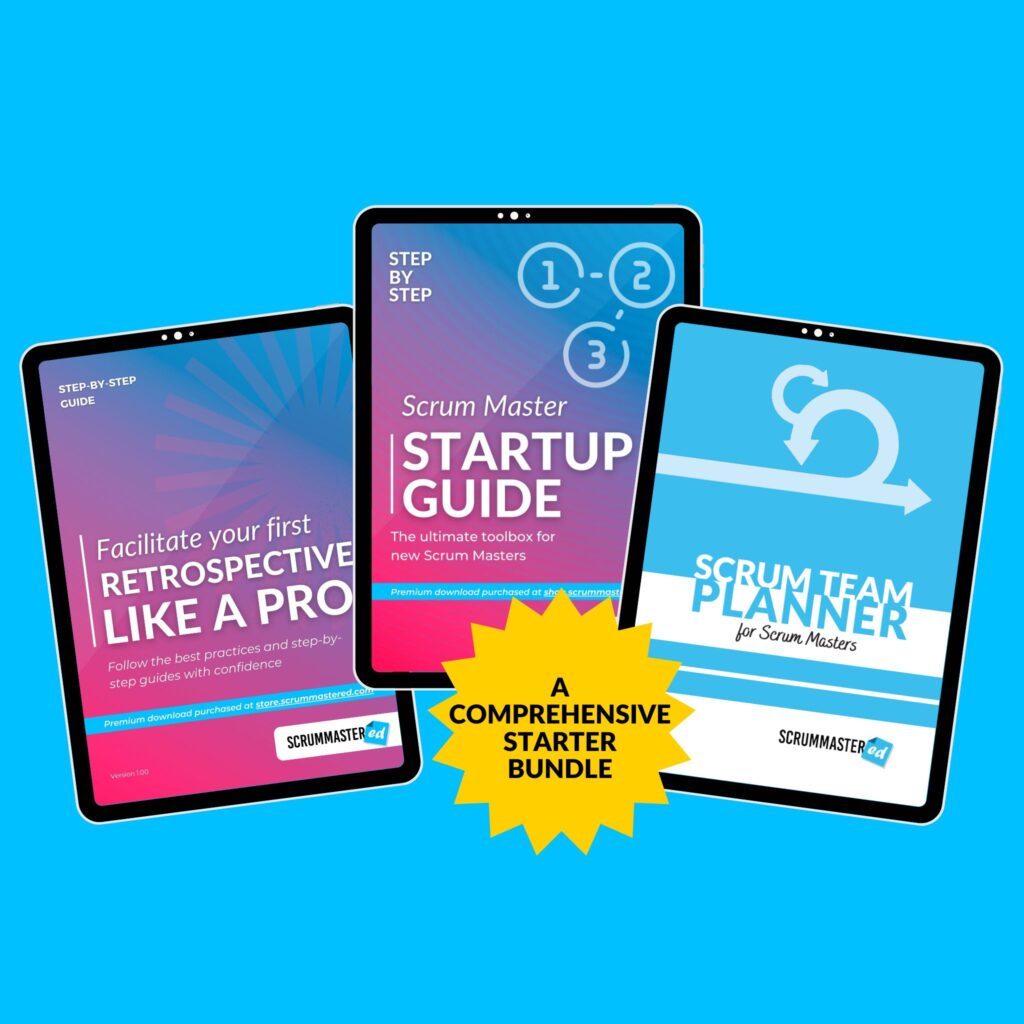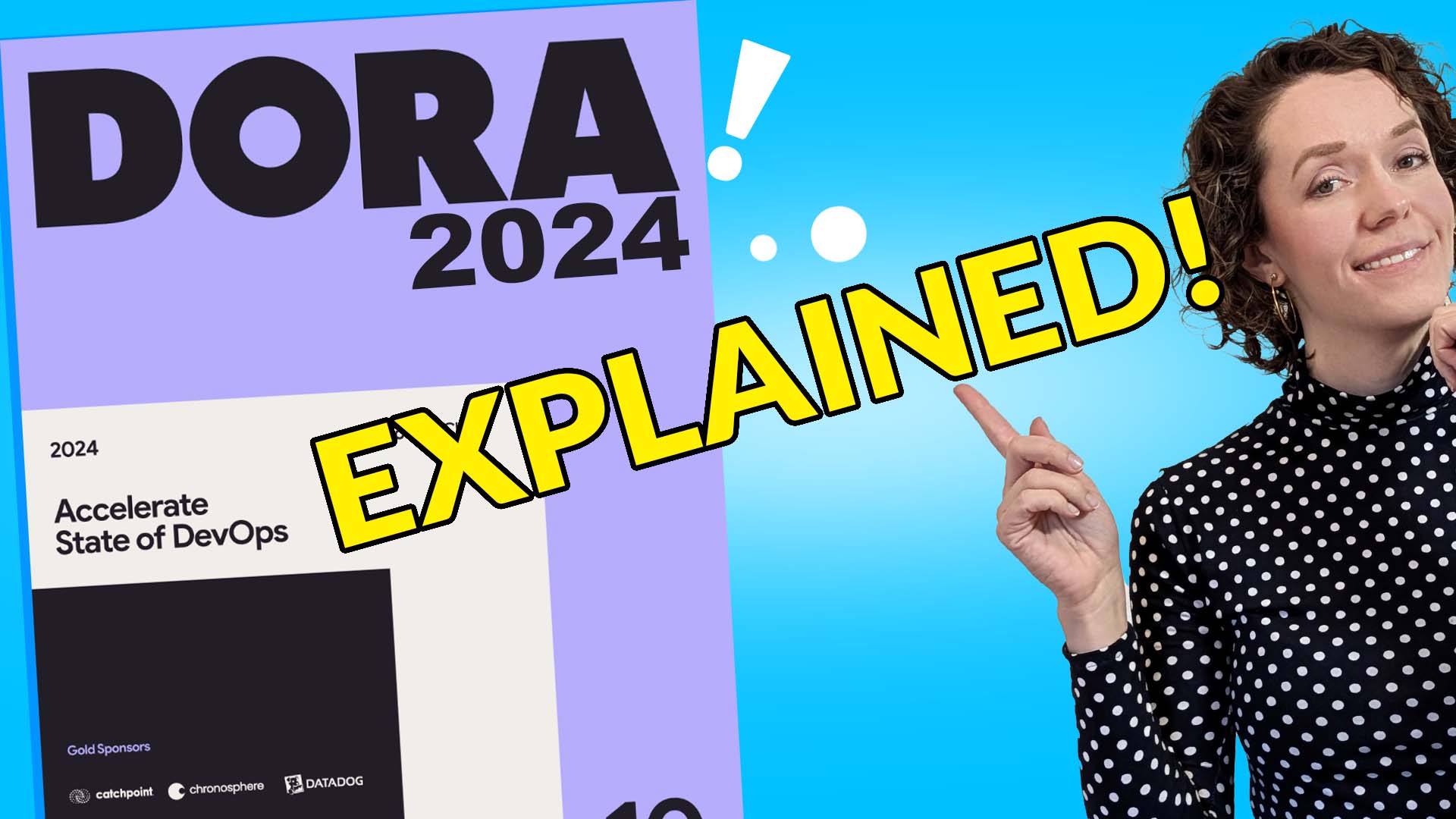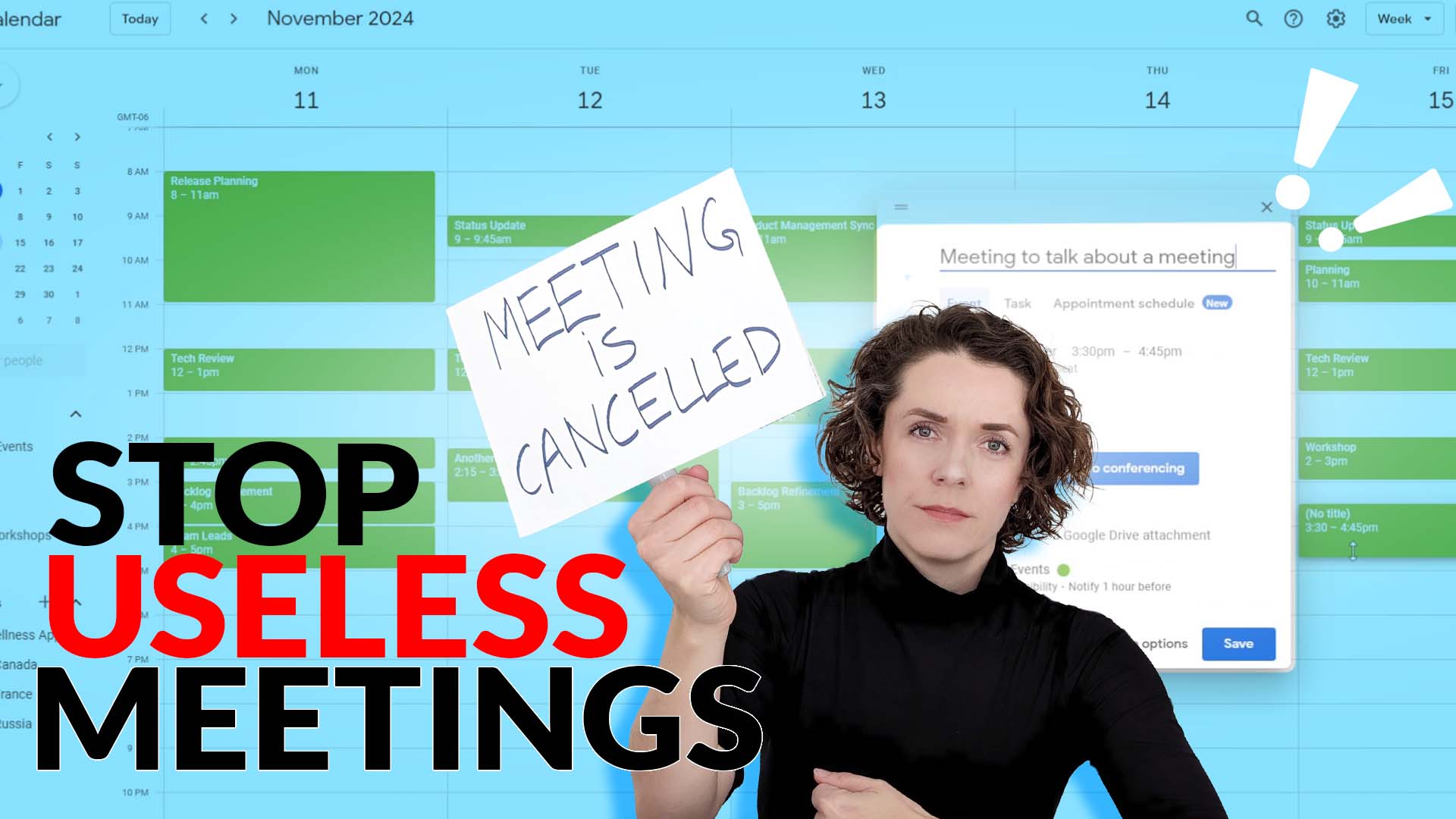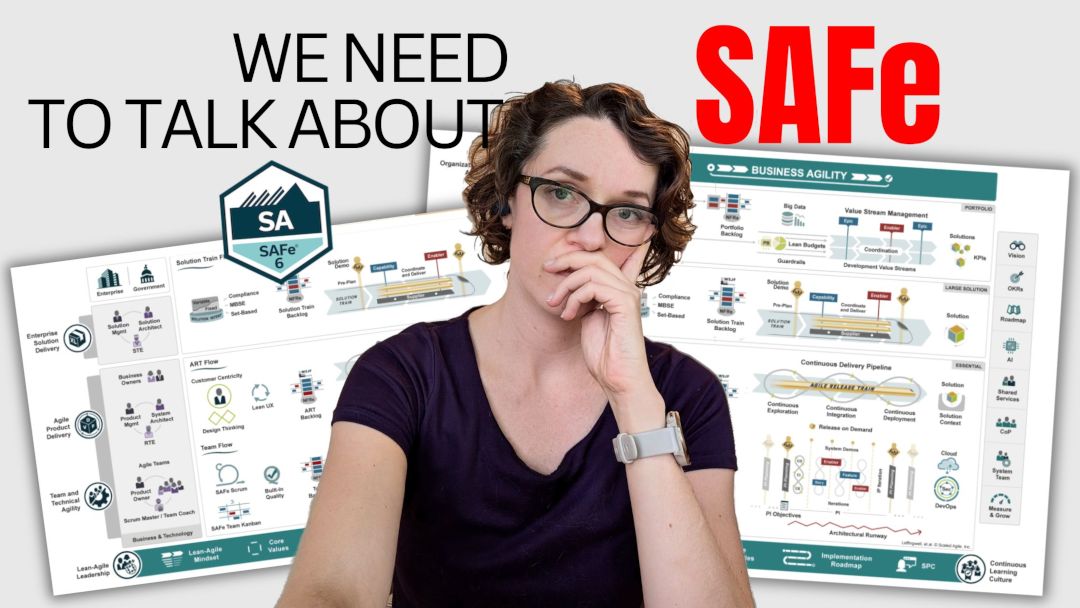If you are coming into Agile and Scrum from a different background, there are lots of things you need to learn before you can enter the industry.
But as we know, there are no guides on where to start and what to do exactly. You would need to spend hours and hours researching the topic before you can really understand what path to take.
If you want to have a clear overview of the learning path you need to take to become a Scrum Master, watch this video.
Agile is becoming more popular in industries outside of software development.
We’ve seen it implemented in marketing, in HR, in non-profit, and even wineries 🍷
However, if you decided to use it with your team in a different background, or you want to become a Scrum Master, it’s not exactly clear how to do it and where you would start.
I this video, I will give you four key steps you should take to get started and set yourself up for success.
I’ll also point you to resources you can use on your journey. Watch the video or keep reading…
Learning Agile
Let’s start with the first step: learning Agile.
Before you start going deeper into the Scrum framework, you need to understand the fundamentals.
Agile is a different way of working. It’s different from traditional management approach which we often refer to as waterfall.
The Agile Manifesto is the starting point. It contains 4 values and 12 principles.
While the manifesto is just one page of text, it is much more difficult than what it appears to be.
You will need to understand how Agile values and principles apply in real-life, how they impact the work, and how they change the way companies manage projects.
There is no specific place you can find that teaches you pure Agile in the same way as you would with Scrum.
Of course, you can read a couple of books and watch videos online to learn a bit more but it will take you a long time to decipher all that information and find the right one that teaches you what you need.
That’s why I created the Fundamentals of Agile online course where I teach you exactly that: what Agile is and how it is applied in real life.
I explain all complex concepts in simple terms and give you examples that you can relate to yourself, making it easy to learn Agile to the extent that you need in your future job.
I’ll link it down in the description so that you can take your first step towards your professional goals today.
Learning Scrum
With good understanding of Agile, you can now move to the next step: learning Scrum.
If you want to be successful in an Agile environment, you will need to have a very strong understanding of the Scrum framework.
And if you want to become a Scrum Master, then you will need to have such a good understanding that you are able to teach it to others, since it will be part of your role.
There are plenty of courses you can take, online and in person.
But before you go to Udemy and get a course for $20, let me warn you about wrong information spread on the Internet.
Unfortunately, because Scrum is so popular, you can find tons of courses provided at all different prices. Of course, everyone wants to benefit from such an important topic.
However, there are lots of people online who do not have the right credentials, knowledge, or experience with Scrum to really teach it.
Scrum is more complex than what it seems, so you need to be wary of snake oil sellers.
When you look for resources, make sure that you verify the credentials of the person providing the information.
Look for licensed trainers from Scrum.org, Scrum Alliance, or Scrum Inc organizations – these are the well-known respectable sources you can trust.
Your very first stop in learning Scrum is the Scrum Guide – the 12 page document that is the single source of truth about Scrum.
Just reading the Scrum Guide is not going to be enough, so you need to learn more practical applications and see some examples.
You can look for some courses online (remember to double check your sources), read a couple of books, or attend a class.
Of course, attending a class is going to be the best and more straightforward way to take.
As a Professional Scrum Trainer I teach official Scrum.org live classes.
I recommend looking into Applying Professional Scrum or Professional Scrum Master – these two are good entry level classes you can attend with any trainer.
Check out my class schedule to sign up for the upcoming one.
Certification
Now you know Agile, you know Scrum. What’s next? I this certification is your best bet.
Yes, generally certifications are not necessary, and I’m not a huge promoter of them.
I worked with plenty of amazing Agile professionals who weren’t certified.
However, if you are coming from a completely different industry and you don’t have a way to gain some relevant Scrum experience in your current job, it will be quite hard to enter the Agile industry without certification.
That is the primary reason I recommend it – I truly believe it can boost your chances of getting in.
I also have a video where I give you some examples of how you can get some essential Scrum Master experience even if you are not playing the role right now.
About certifications…
Same as with classes, you can find lots of various organizations who can give you a certificate, some even offer it for as low as 40 bucks.
But the online two I would recommend at this point in time as the PSM I and CSM I.
PSM I is the Professional Scrum Master level 1 from Scrum.org
CSM I is the Certified Scrum Master level 1 from Scrum Alliance.
These are two most respected and well-known certifications in the industry.
I’ll put the link in the description to where you can learn about them.
If you attend a Professional Scrum class with me, you will get up to two free attempts at the PSM I assessment which usually costs $150 USD.
I also have this video I made about the three levels of PSM certifications if you’d like to learn more.

Bundle: Getting Started as a Scrum Master Must-Haves
This bundle combines a small set of tools to introduce you to the fundamental concepts and give you a starting point for the Scrum Master role.
Getting the job
Ok, with all that out of the way and with a certification in your hands, it’s time to start looking for your dream job.
As I mentioned before, you might not have the exact Scrum experience you can put forward.
That’s ok as long as you can describe your other relevant experience and focus your resume on the Scrum Master role.
Talk about skills and knowledge that you believe will help you in the role and explain why you believe you are going to be good at it even if you don’t have direct Scrum experience.
Also, don’t forget about my video on how to gain experience even if you are not a Scrum Master right now – go watch it right after this video!
You need to be able to read the job descriptions to identify what jobs you should apply to.
You don’t want to get into a job that you actually can’t do, or a job where you are not going to get enough support.
Of course, the first months are going to be challenging, but it will be much better if you join a company that can help you learn and grow as well.
And, of course, once you get into the interviews, you need to be ready.
Your Agile and Scrum knowledge will be essential here, but just that is not going to be enough.
It’s important to have a good knowledge of adjacent practices, of some popular terminology, and have an idea of how to approach different situations.
I have this video where I talk about how to interview Scrum Masters – it can help you see what are some of the common questions you may expect.
When I talk about different practices and terminology, I mean things like Kanban, Scrum board, burndown, velocity, user stories, spikes, and many many more.
I believe understanding these is essential not only to passing the interviews, but also to actually being successful in the role.
Scrum Master role is not just about Scrum, there is more to it.
If there was an online course or guide on this, would you be interested in buying it?
Let me know in the comments what would be the best way for you to learn about something like this.
If you are watching this video around the time I published it, then I am also offering one-on-one mentorship for Scrum Masters: aspiring, new, and experienced.
You can book a free discovery call with me to discuss how mentorship can help you be successful in your Agile career.
And we are at the end of the video. It seems that it went so fast. Let’s have a quick summary:
- Learning Agile
- Learning Scrum
- Certification
- Preparing for the interviews
I hope that you learned something new and you’ve got some clearer ideas on what your next step is.
Have you recently changed into the Scrum Master role? Share your tips in the comments.



